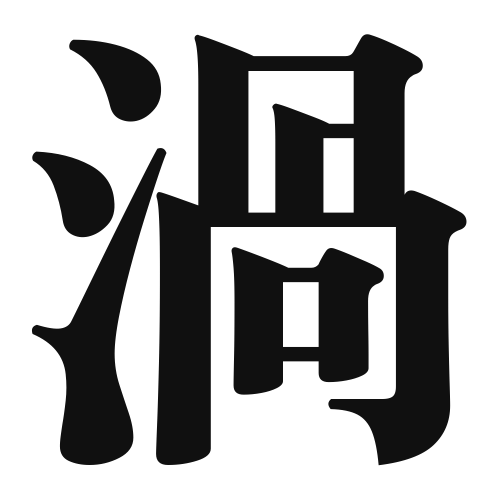1. Overview of Meaning
The kanji “渦” (pronounced “u”) means “whirlpool” or “eddy.” It represents the swirling motion of water, often used to describe a vortex or a spiral movement in various contexts.
2. Formation and Radicals
Formation of the Kanji: The kanji “渦” is a compound character (会意文字) that combines elements to convey its meaning. It consists of the water radical “氵” (which indicates something related to water) and the character “我” (which can mean “I” or “self”). Together, they evoke the image of swirling water.
Radical: The radical of “渦” is “氵,” which is commonly associated with water-related characters.
3. Examples of Usage
Common Words and Phrases: Some common words that include “渦” are “渦巻き” (uzumaki – spiral) and “渦潮” (uzushio – tidal whirlpool).
Example Sentences in Daily Conversation:
- 「川の中に大きな渦ができている。」(There is a big whirlpool in the river.)
- 「彼は渦巻きのような思考を持っている。」(He has a thought process like a spiral.)
4. Synonyms and Antonyms
Similar Kanji: A similar kanji is “旋” (sen), which means “to spin” or “to rotate.” While both convey a sense of circular motion, “渦” specifically refers to a swirling body of water, whereas “旋” can refer to any spinning motion.
Antonyms: An antonym could be “静” (shizu), meaning “calm” or “quiet,” which represents stillness, contrasting with the dynamic movement implied by “渦.”
5. Cultural and Historical Background
Relation to Japanese Culture: The concept of “渦” is often found in Japanese art and literature, symbolizing the complexities of life and nature. It can represent both chaos and beauty.
Proverbs and Idioms: One common idiom is “渦中の人” (uzuchuu no hito), which means “a person in the whirlpool,” referring to someone who is deeply involved in a complicated situation.
